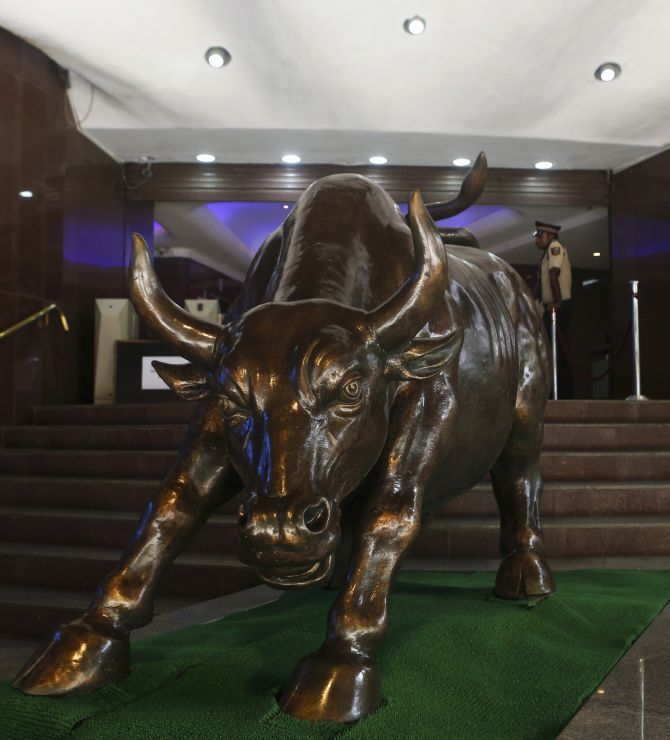Further outperformance hinges on pickup in industrial activity, buying by local investors.
 While the slide in the Chinese market has over the past two months has impacted emerging market (EM) equities and currencies, India has managed to stay safe.
While the slide in the Chinese market has over the past two months has impacted emerging market (EM) equities and currencies, India has managed to stay safe.
India’s benchmark indices - the Sensex and Nifty - have outperformed the MSCI EM index for a fourth straight month. In the past two months, the MSCI EM index is down 13 per cent, on account of the correction in Chinese equities.
In comparison, the Sensex has gained four per cent during the same period.
According to experts, India has outperformed as it stands to benefit from the sharp drop in commodity prices owing to global growth fears triggered by the developments in the Chinese market.
The resilience shown by the rupee against the US dollar, even as other EM currencies tumbled, has provided a boost to India’s prospects.
Prior to China’s decision to devalue the yuan, the rupee more or less flat against the dollar even as Russian rouble, Brazilian real and South African rand fell between five and 20 per cent.
G Chokkalingam, founder of Equinomics Research & Advisory, says India underperformed other emerging in the first half of 2015 and has played catch up.
“Part of the outperformance is due to the catch-up played by the Indian markets. Secondly, investors have been attracted towards the relative growth in GDP growth offered by the India at a time when China was slowing and other markets like Russia and Brazil have been contracting. Also, India has done fell on external factors like current account balance and forex reserves,” said Chokkalingam.
The sharp outperformance over the past three months has widened the valuation gap between India and other emerging market, making it challenging for the Indian market to justify and sustain the valuation gap.

According to a report by Deutsche Equities, the valuation premium between MSCI India and MSCI EM has widened to 65 per cent, the most in 12 years. The average valuation gap between these two indices in the past five years has been 43 per cent.
“We attribute this widening premium to three key factors: increasing expectations of a Fed Lift-off in September and a strengthening USD; a sharp decline in commodity prices; the CRB index is down 11 per cent in the past three months and impressive resilience of Indian rupee,” noted Deutsche Equities analysts Abhay Laijawala and Abhishek Saraf in a note dated August 11.
According to experts, investors have started increasingly differentiate within the emerging market pack and India has emerged an attractive option.
“Fundamental EM risks are shifting as some countries, such as India, become less risky while others, such as Mexico, look more vulnerable. Importantly, both currency and sovereign debt markets appear to be pricing risk much more rationally than was the case just a few years ago. This should limit potential fallout when the Federal Reserve starts to raise interest rates,” said a strategist at JP Morgan Asset Management in a note.
For the Indian markets to sustain with outperformance, Chokkalingam said there has to be a turnaround in industrial economy.
According to Deutsche Bank, India’s attractiveness might begin wane after the US Federal Reserve lifts interest rates later this year.
“While India’s relative attractiveness may start to abate post the Fed lift-off – impacting FII flow environment - we expect domestic investors to continue to be net buyers of Indian equities, providing an offset to any abatement in FII flows,” it said.










 © 2025
© 2025